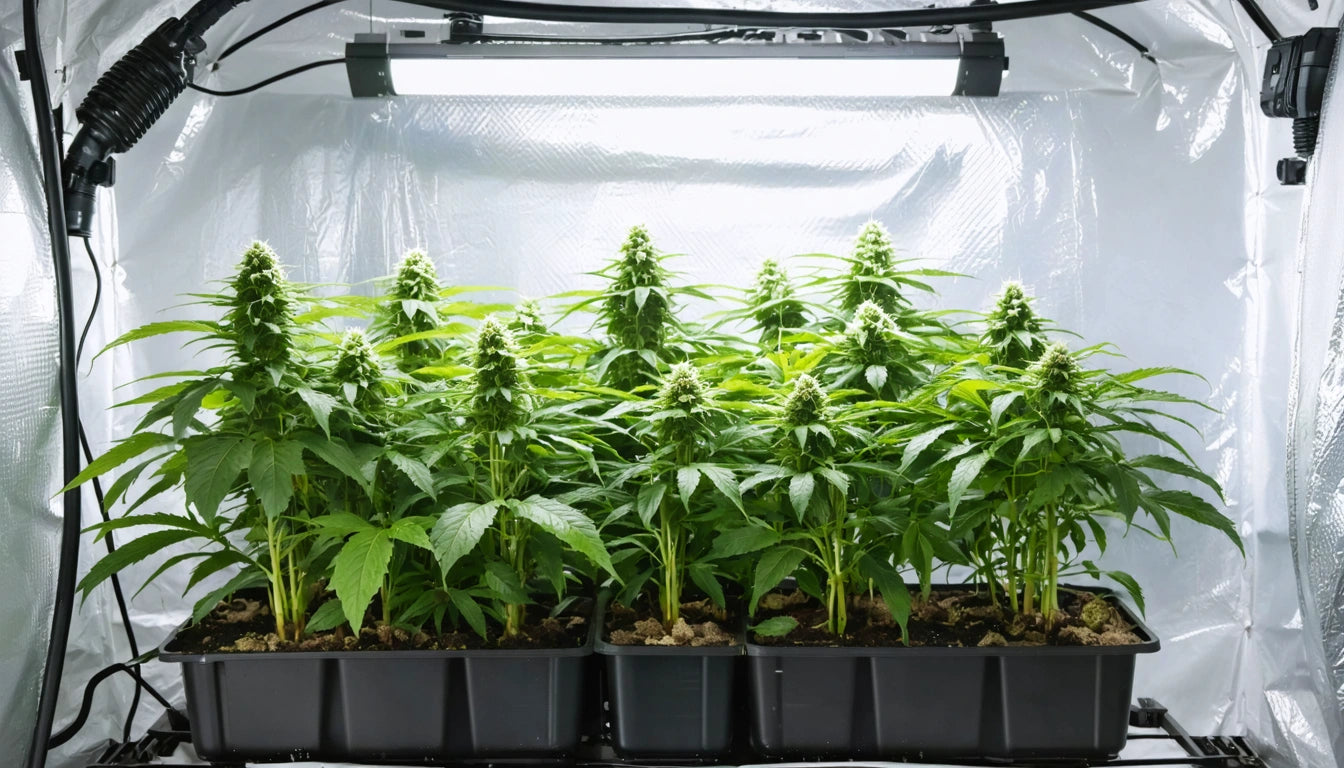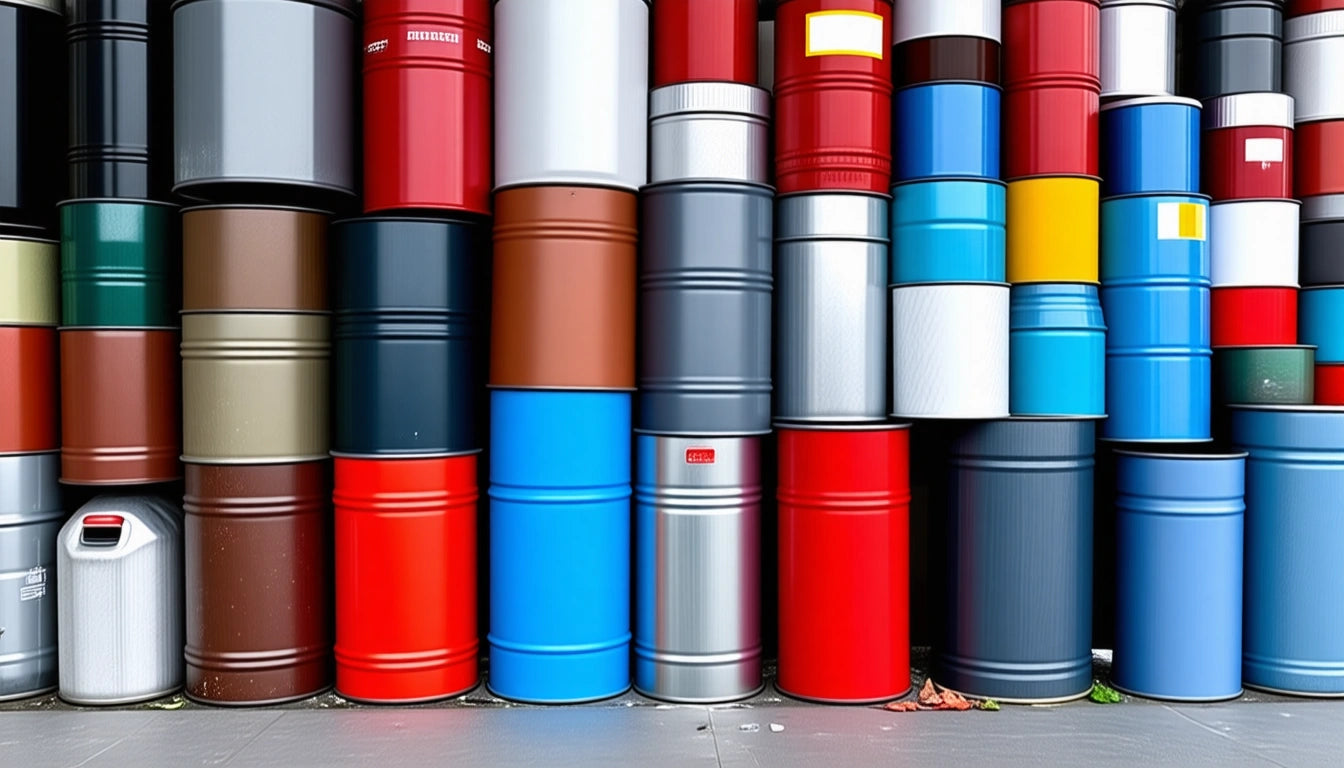Table of Contents
Optimizing Climate Control and Maintenance in Your Grow Tent
Maintaining optimal climate conditions in your grow tent is crucial for plant health, growth rates, and ultimate yield. Temperature, humidity, airflow, and cleanliness all play vital roles in creating the perfect growing environment. This guide covers comprehensive strategies for how to keep temperature down in grow tent setups, manage humidity, set up ventilation, and maintain your growing space for optimal results.
Understanding Climate Control Fundamentals
Before diving into specific techniques, it's important to understand the ideal climate parameters for cannabis cultivation. Most strains thrive in temperatures between 70-85 °F (21-29 °C) during the day and slightly cooler at night. Relative humidity requirements vary by growth stage, typically ranging from 40-70%. The relationship between temperature and humidity, known as Vapor Pressure Deficit (VPD), significantly impacts plant transpiration and nutrient uptake.
Monitoring these conditions consistently is the first step toward effective climate management. Digital hygrometers and thermometers are essential tools for any grow tent setup, with wireless options allowing for remote monitoring without disturbing the growing environment.
Effective Cooling Strategies for Grow Tents
Learning how to cool grow tent environments effectively prevents heat stress and promotes healthy growth. Here are several proven methods:
Exhaust Systems
A properly sized exhaust fan is your primary defense against excessive heat. When selecting an exhaust fan, calculate the cubic feet per minute (CFM) needed based on your tent size, then add 25% to account for filters and ducting restrictions. Position your exhaust at the top of the tent where hot air naturally rises.
Strategic Light Scheduling
Running lights during cooler nighttime hours can significantly reduce peak temperatures. This technique, known as "night growing," works particularly well during summer months when daytime temperatures are highest.
External Air Conditioning
For persistent heat issues, a portable air conditioner positioned to blow cool air into the tent intake can provide direct temperature control. This solution is particularly effective in warmer climates or when growing in confined spaces where heat buildup is problematic.
Heating Solutions for Colder Environments
While overheating is common, knowing how to heat a grow tent properly is equally important, especially in colder climates or during winter months:
- Space heaters with thermostatic controls placed outside the tent with directed airflow
- Heating mats placed under plants to warm the root zone
- Insulating tent exteriors with reflective materials to retain heat
- Oil-filled radiator heaters that provide gentle, consistent warmth without drying the air
Safety is paramount when using heating equipment. Always ensure heaters have tip-over protection and keep them away from water sources and flammable materials. Using high-quality materials like those used in professional cultivation packaging can also help with insulation and maintaining consistent temperatures.
Managing VPD and Humidity Levels
Understanding how to lower VPD in grow tent environments requires balancing temperature and humidity. VPD, measured in kilopascals (kPa), represents the difference between the amount of moisture in the air and how much moisture the air can hold when saturated.
Humidity Control Techniques
To increase humidity:
- Use humidifiers with controllers
- Place water trays near passive air intakes
- Mist walls (not plants directly) during vegetative stages
To decrease humidity:
- Increase air exchange rates
- Use dehumidifiers with drain hoses for continuous operation
- Ensure proper plant spacing for air circulation
For those wondering how to lower kPa in grow tent setups, remember that lower temperatures and higher humidity decrease VPD, while higher temperatures and lower humidity increase it. Different growth stages prefer different VPD ranges, with vegetative plants typically preferring lower VPD (0.8-1.0 kPa) and flowering plants benefiting from slightly higher VPD (1.0-1.5 kPa).
Setting Up Proper Ventilation Systems
Learning how to set up ventilation in a grow tent is fundamental to climate control. A complete system includes:
Components of Effective Ventilation
- Intake fans or passive intakes (lower in the tent)
- Exhaust fans with carbon filters (upper tent positioning)
- Ducting with minimal bends
- Oscillating fans for internal air movement
The ideal setup creates negative pressure inside the tent, visible as a slight inward pull on the tent walls. This ensures all air exits through the filtration system, controlling odors and maintaining fresh air circulation.
As described in this comprehensive guide for beginners, proper ventilation not only regulates temperature but also strengthens stems through gentle movement and helps prevent mold and pest issues.
Cleaning and Maintenance Best Practices
Understanding how to clean a grow tent properly extends equipment life and prevents pest and disease issues:
Regular Maintenance Schedule
- Weekly: Wipe down surfaces, check for light leaks, inspect for pests
- Monthly: Clean fan blades, check filter efficiency, inspect ducting
- Between grows: Complete sanitization with mild hydrogen peroxide solution
For thorough cleaning between cycles:
- Remove all plants and equipment
- Vacuum loose debris
- Wipe all surfaces with a 3% hydrogen peroxide solution
- Clean and disinfect all pots and hydroponic components
- Replace or clean carbon filters and ducting as needed
Following these maintenance practices prevents cross-contamination between grows and ensures optimal environmental conditions for each new cycle. For more detailed information on setting up and maintaining grow spaces, this DIY grow tent guide provides excellent supplementary information.
Advanced Techniques for Climate Optimization
For experienced growers looking to further refine their environment, several advanced approaches can help maintain perfect growing conditions:
- Automated climate controllers that adjust fans, heaters, and humidifiers based on sensor readings
- CO2 enrichment systems with environmental triggers
- Water-cooled lighting to significantly reduce heat load
- Sealed room designs with mini-split air conditioners for precise climate control
These advanced systems often represent significant investments but can dramatically improve yields and quality through precise environmental management. When implementing these systems, start with the fundamentals of proper ventilation and temperature control before adding complexity.
By implementing these climate control and maintenance strategies, you'll create an optimal environment for plant growth while extending the lifespan of your equipment. Remember that consistency is often more important than perfection, as plants can adapt to stable conditions even if they're slightly outside ideal ranges.











Leave a comment
All comments are moderated before being published.
This site is protected by hCaptcha and the hCaptcha Privacy Policy and Terms of Service apply.